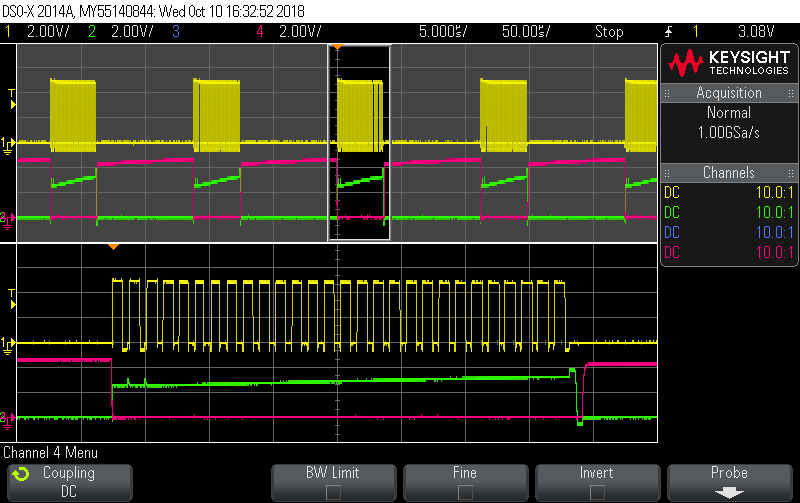Other Parts Discussed in Thread: BQ4050
I am trying to use a BQ2700A as a boost battery charger.
Current target
- 5V 3A (USB) -> 2S1P LiIon
- 3u3 inductor @ 800 kHz
- Using my own 4 layer board
- Compensation networks copied (give or take capacitance tolerance) from EVM (I think)
(Note: in the future I may need higher input voltage, e.g. 12V 3A)
Here's what I have so far:
- REGN at 6.06V, no major ripple
- Some success talking with BQ4050 gas gauge chip for smart charging
- Input 12V 350mA
- Output 6.1V with ~12.5 Ohm load (approx. 500mA)
- Temperature rise ~ 15 C at hottest component
The problem I'm having is that the charger only seems to operate in buck mode.
Do people have any thoughts??
I got the 'scope out, and I found that the PWM control seems to be really unstable. For 12V 250mA -> 6.1V ?? mA, I get the following waveforms on SW1 (yellow) and SW2 (green). I am using very short probe connections to avoid noise pickup. I would expect SW1 to be nice an periodic, and SW2 to usually sit at 6V with occasional dips to ground to recharge bootstrap capacitor 2.
I checked that the switching frequency is correct and the switches aren't nasty/noisy (scope has 100MHz bandwidth), which is good. However, SW1 and SW2 don't have waveforms like I would expect - I would expect SW2 be high almost all the time.
However, the charger won't boost. Reducing the input to 5.1V, the Vsys sags to (i.e. out of regulation). I'm not really sure what's going on here - SW1 and SW2 seem to be operating at different rates. (Ch4 is the low side gate for SW2 node)





